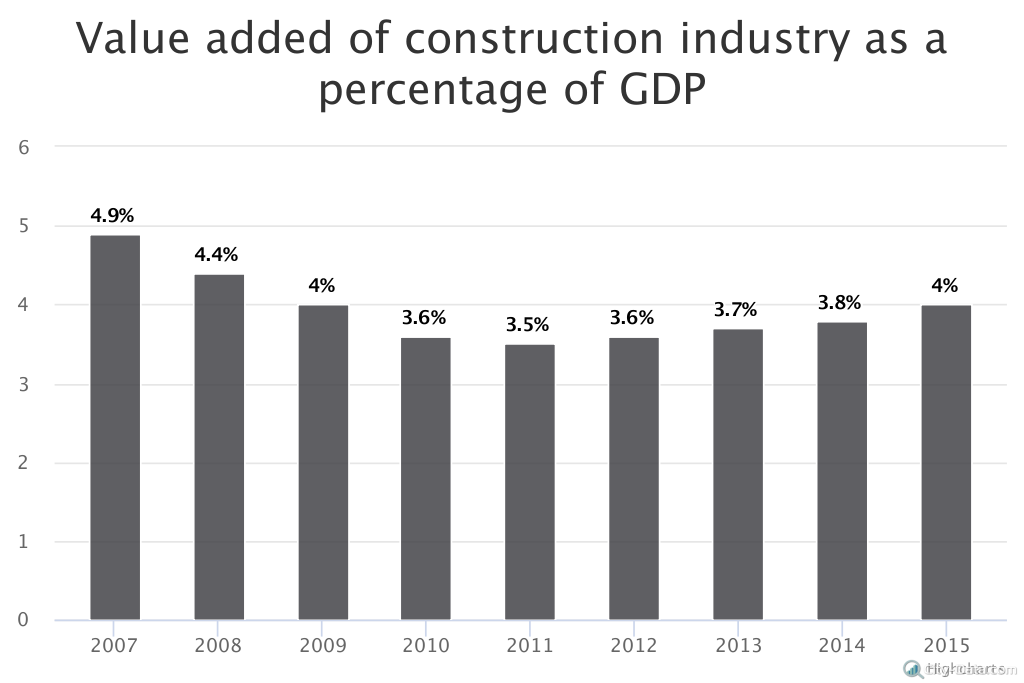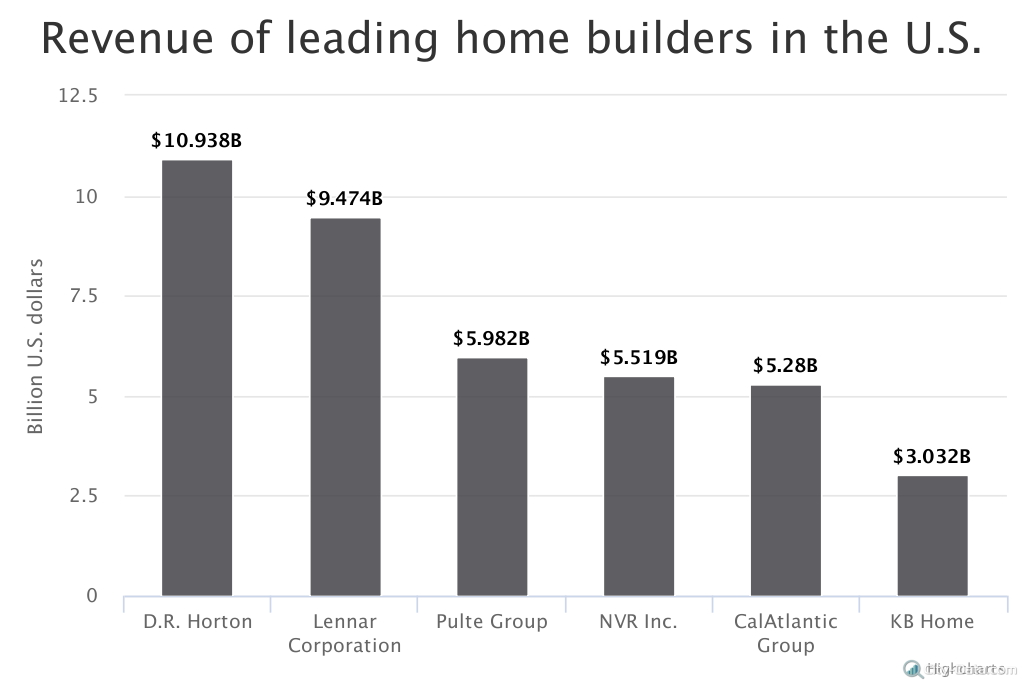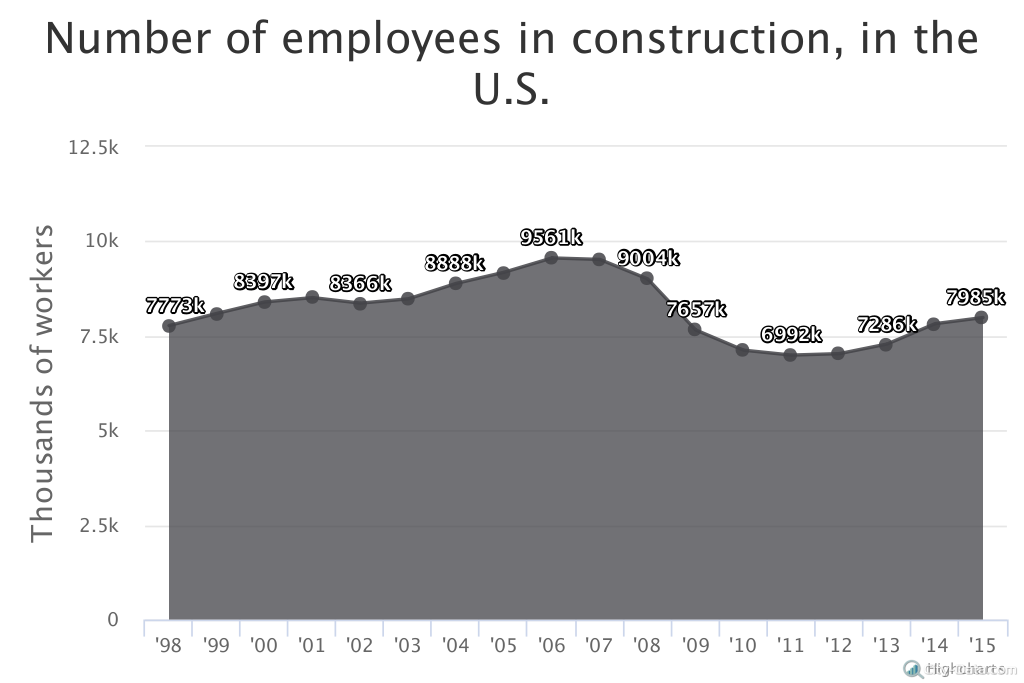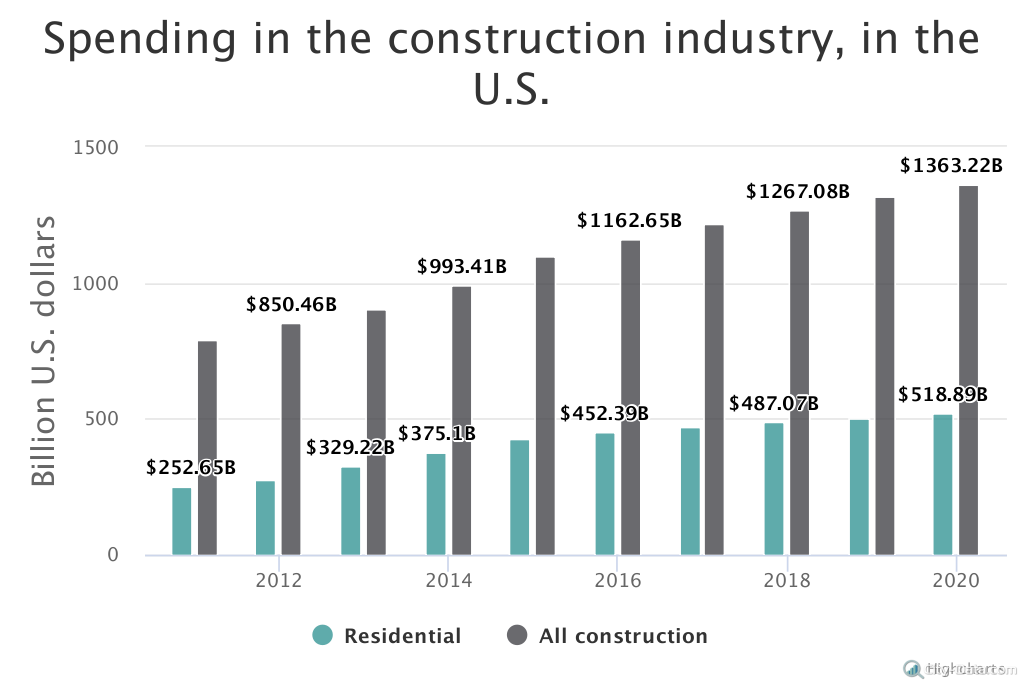Pavel Prikhodko, Ph.D. Machine Learning
The United States is now the second-largest construction market in the world, holding about 10 percent of the total market share. In 2014, the construction sector accounted for 3.7 percent of the nation’s Gross Domestic Product, according to Statista.com. That rate was approximately the same 3.7 percent in 2013, compared to 3.6 percent in 2012. The American construction industry added the most value as a percentage of GDP in 2007 — 4.9 percent.

The leading home builder in the country is D.R. Horton, which generated $10.39 billion in revenue in 2015. Lennar Corporation’s revenue amounted to $9.47 billion, while Pulte Group received $5.98 billion. The top five companies also include NVR, Inc. with $5.52 billion and CalAtlantic Group with slightly above $5.2 billion in revenue.

If we examine the statistics representing the number of production workers in the construction industry in the United States, we see that there were 7.8 million people employed in the construction sector in 2014. This number was the highest since 2008, when more than 9 million people were employed in the industry.

A forecast predicts that the U.S. construction industry will continue its positive trend from 2011, generating around $1.07 trillion in revenue by the end of 2016. In 2017 and 2018, the industry will generate roughly $1.13 trillion and $1.21 trillion respectively. It is expected that construction revenues will exceed $1.3 trillion in 2019.
According to a forecast representing new residential construction spending, it is projected that the sector will see $446 billion in 2017 and $485 billion in 2018. In 2016, new residential construction spending is projected to be over $410 billion. The rate will reach its peak in 2019, when new residential construction spending will reach over $525 billion.

About Pavel Prikhodko
Pavel Prikhodko, Ph.D. Machine Learning
Pavel has worked for many years as a researcher and developer on a wide range of applications (varying from mechanics and manufacturing to social data, finance and advertising), building predictive systems and trying to find stories that data can tell.
In his free time, he enjoys being with his family.
Other posts by Pavel Prikhodko:
